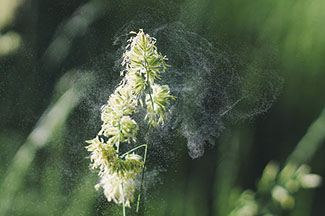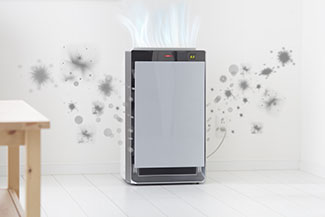Your Air Conditioner and Indoor Air Quality
 10 July 2018
10 July 2018 

Seven Steps to Breathing Easier at Home
Maybe you moved to Arizona to get away from pollen produced by plants in other parts of the country in hopes that your allergies would calm down. But it didn't work. Or maybe you've always lived here and have struggled with allergies many months of the year.

Your problems may be due to plants, trees, animals, mold, and even Arizona's dusty air. But whatever the issue, your air conditioning system can help as long as you analyze the situation and make adjustments. Here are suggestions for improving the air quality at your house:
1 | Have a whole house energy audit:
Our philosophy is that if you want to clean up your heating and air conditioning system, you start by having a whole house energy audit done by a contractor qualified for the job. That audit will determine if your AC and ducts are in good shape and whether they need repairs or replacing. It will also indicate whether you need to seal cracks in and around doors and windows, as well as sealing or repairing leaky ductwork.
2 | Have the AC cleaned:
Your air conditioner should be cleaned by a trained technician. Hire an expert for the job because many AC components may need to be removed for cleaning and then reassembled. This process will remove dust, mold and pollen that could diminish air quality. Once the indoor coil and drain pan have been cleaned properly, all that needs doing is keeping up with regular filter changing. Indoor coil cleaning doesn't require doing again for another five to 10 years if you are disciplined in replacing air filters regularly.
3 | Have ductwork professionally cleaned and resealed:

Having your ductwork professionally cleaned and resealed will help prevent dust and allergens from entering your house due to leaky ducts. Almost all homes have duct problems of one kind of another.
4 | Upgrade the type of paper filter you are using:
If you upgrade the type of paper filter you are using, be sure to keep changing filters regularly. We have always told homeowners that usually all they need for intake vents is a low-cost, one-inch paper filter that is changed once a month. But if you have serious allergy or breathing problems, you may want a thicker, high-efficiency filter for intake vents. These filters pick up more particulates floating in your home's air. Obviously, these filters cost more, but you may not have to replace them more than twice a year.
5 | Install UV lights to "scrub" the air in your AC:
If you want to do more to improve air quality, install an air scrubber plus air purifier above your indoor air handler, which is probably located in the attic or a closet, according to John Dargavel of Isley's Home Service in Phoenix. This device uses germicidal UV light wave technology to remove such pollutants as cigarette smoke, dust and pollen, mold, odor-causing bacteria, and pet and cooking odors. There are other whole house systems that can be installed as well. By the way, even rooftop AC units can have purifiers installed.
6 | Run the whole house fan in the winter and run the AC with it in summer:
If you have severe allergies, Dargavel suggests running the whole house fan throughout winter and summer all day and night to help purify air. Moving the air constantly through top of the line air filters and an air scrubber can greatly improve air quality. During the muggy monsoon summer, you don't want to run the fan constantly without running the AC, too, or your home can develop mold problems. Running the fan constantly means using more electricity, but you can reduce energy consumption by turning the fan off when you're not at home.

7 | Install a standalone air purifier:
You can also buy a standalone air purifier for about $200 to $700 to help clean the air in your home. Dozens of purifier models are on the market, including whole-house options, so do your research carefully. Once you have one, it will need the same regular cleaning and maintenance that your air conditioner must have to handle air quality problems.
Although you may clean up the air in your home, you may need to leave the house several times a day – to go to work or school, go on a hike, or do some shopping. You can't hide out next to your air purifier all the time. So, our suggestions might not completely solve your problems. But hopefully, you'll begin to breathe easier while you are in your own home.
Further Research:
You may also want to read up on what the federal government has to say about equipment to improve breathing problems:
###
Photo Credits:
RELATED CONTENT:
- Blog: Can You Cool Your House With Fans?
- Blog: Six Common AC Problems That Can Be Fixed
- DIY FAQ: What Is The Role of Duct Cleaning?
- DIY FAQ: Consumer Guide for Buying a Home AC System
- Podcast: Air Conditioning & Energy Audits
Print this page
recent post
- Duck, Duck, Duct! How Often Should Ductwork Be Cleaned?
- Vinyl vs. Fiberglass Windows: Which Is The Better Choice Of Replacement Window?
- We May Be The Grand Canyon State, But The Rocky Mountains Are Important For Arizona
- Welcome to Arizona! Things A Newbie to Arizona Should Know
- The Pros & Cons of Buying A Flipped House
- Getting In On The Ground Floor
- Why It’s More Critical Than Ever To Get Your AC Serviced Before Summer
- The Reality of Remodeling
- What To Look For When Comparing Your Roofing Quotes
- What To Expect When Buying New Windows & Doors
